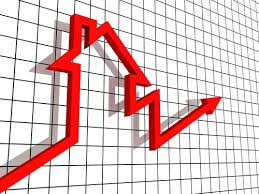
Unlike the role it played in the Great Recession that started in 2008, the housing industry may help lead us out of today’s pandemic-induced economic recession, according to Daniel McCue, Senior Research Associate at Harvard University’s Joint Center for Housing Studies [1].
While housing was more of a barrier than a balm in the last economic recovery, it is more typical for the housing industry to serve as a source of strength during an economic recovery. In fact, this has been the case in nearly every recession over the past five decades, according to McCue.
In most economic recessions, declining interest rates lead to homebuying and homebuilding, which then lead to spending on consumer goods.
In a typical year, residential construction makes up 4% of GDP. However, construction contributed an average of 18% growth in the gross domestic product (GDP) in each year following a recession from 1970 until the Great Recession.
After the Great Recession, home construction made up more than its typical share, rising 2 percentage points.
One of the main points of difference between the housing market leading into the Great Recession and the market heading into today’s economic downturn is that the housing market prior to 2008 had a “substantial overhang of distressed and foreclosed properties,” which “needed to be absorbed before housing construction could be a driver of recovery,” McCue said.
The housing market early this year, however, had tight supply and low vacancies. Vacancy rates and for-sale inventory rates lower than they had been in years.
The total housing vacancy rate is 11.4%—2.4 percentage points lower than in 2007.
The share of vacant homes for sale is 58% lower than in 2007 and the share of vacant rental properties available is 21% lower.
“Hopefully, what these vacancy numbers do suggest is that, in terms of supply, housing construction is not likely to be a barrier to recovery and instead may once again be a source of strength that helps the economy turn around once the worst is over,” McCue said.
Two unknowns, however, are the short-term outlook for residential construction and the future of mortgage loan delinquencies. In many places, non-essential residential construction was halted as a result of the COVID-19 pandemic, which could tighten supply even further. Some restrictions are already being lifted, it remains to be seen how many restrictions persist or whether some will have to be reinstated.
Delinquency rates picked up during Q1 2020. April witnessed mortgage delinquencies [2] experience their largest monthly increase in history. However, many of these mortgages are in forbearance plans with their lenders.
